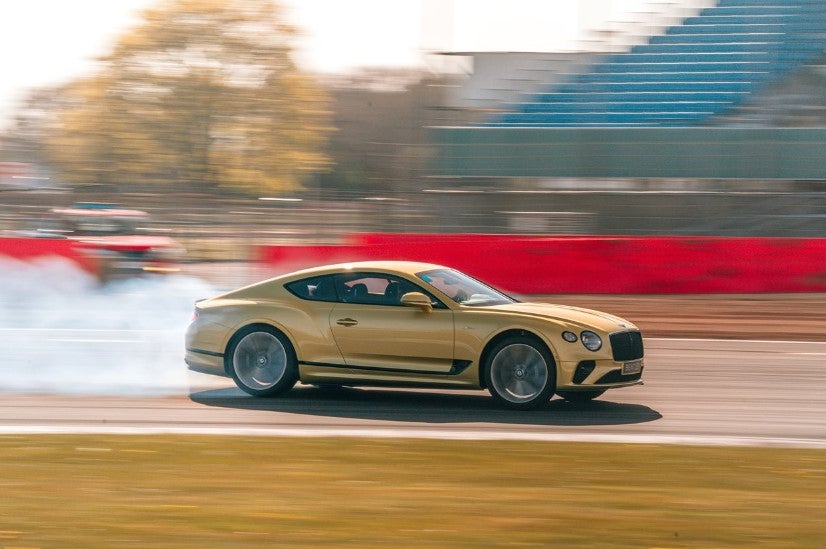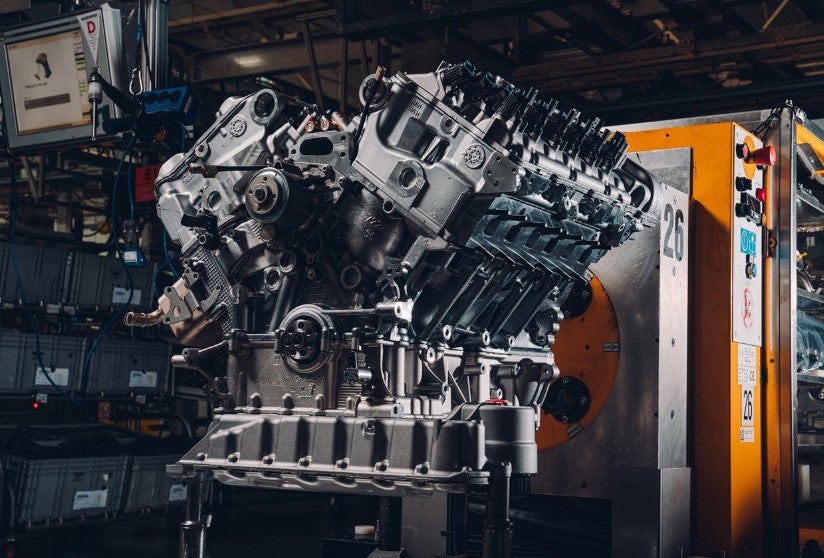Bentley to axe W12 petrol engine
Volkswagen Group-owned Bentley has announced the end for its 12-cylinder petrol engine from next year. The move to scrap the W12 engine – which has been fitted to Bentley models since 2003 – is part of the move towards electric vehicles at the luxury brand.
Production of Bentley’s W12 engine is to finish in April 2024 after more than 100,000 units produced at the UK plant in Crewe.
The decision comes as part of Bentley’s acceleration towards a sustainable future through its ‘Beyond100’ strategy which will see the company’s entire model line fully electrified by the start of the next decade.
When production of the W12 ceases next year, Bentley’s entire model line will be available with the option of a hybrid powertrain.
Bentley says it ‘isn’t letting the W12 bow out without a dramatic send-off’. Development work has concluded recently on the most powerful version of the W12 ever created. The ultimate iteration of this mighty engine – destined for just 18 examples of the Bentley Batur to be handcrafted by Mulliner – is now confirmed as developing 750 PS and 1,000 Nm of torque. The increased torque figure forms the typical Bentley ‘torque plateau’, running from 1,750 rpm to 5,000 rpm – with peak power at 5,500 rpm.
Bentley’s Chairman and Chief Executive, Adrian Hallmark, said: “Our progressive journey towards sustainable luxury mobility means making changes to every area of Bentley Motors. When we first launched the W12 back in 2003, we knew we had a mighty engine that would propel both our cars and the brand forwards at speed. 20 years and more than 100,000 W12s later, the time has come to retire this now-iconic powertrain as we take strides towards electrification – but not without giving it the best send-off possible, with the most powerful version of the engine ever created.
“The 750 PS titan that Mulliner has created for the Batur marks the end of a development journey of which our engineering and manufacturing colleagues should be extremely proud, and when production finishes in April next year we aim to retrain and redeploy all of the skilled craftspeople who still build each engine by hand.”
Bentley also said it aims to retrain and redeploy all 30 of the skilled craftspeople that hand-assemble and test every single W12 engine at Bentley’s carbon-neutral factory in Crewe. Meanwhile, the W12 engine production facility will make way for an expanded line for the completion of other Bentley engines used for the plug-in hybrid models.
Since the first introduction of the 6.0-litre, twin-turbocharged W12 in 2003, the engineering team in Crewe has continually improved the performance of the engine.
Over the last 20 years, Bentley maintains power has increased by 37 per cent and torque by 54 per cent, while emissions have been reduced by 25 per cent. Initially this was through evolution and optimisation of the control systems, improvements in the oil and cooling designs, turbocharging technology and more effective injection and combustion processes.
The latest generation of W12 was launched in the Bentayga in 2015. For the launch of the Bentayga, the W12 was completely redesigned from the sump up, and it’s that version of the engine that remains in production today – featuring cylinder deactivation, direct and port injection, and twin-scroll turbos.
Each W12 engine is currently hand-built over 6.5 hours by a team of craftspeople before undertaking a test regime of over an hour via three specialist diagnostic machines. Every week, one engine is run over an extended test cycle and then fully stripped for inspection.


Volkswagen Group-owned Bentley has announced the end for its 12-cylinder petrol engine from next year. The move to scrap the W12 engine – which has been fitted to Bentley models since 2003 – is part of the move towards electric vehicles at the luxury brand.
Production of Bentley’s W12 engine is to finish in April 2024 after more than 100,000 units produced at the UK plant in Crewe.
The decision comes as part of Bentley’s acceleration towards a sustainable future through its ‘Beyond100’ strategy which will see the company’s entire model line fully electrified by the start of the next decade.
When production of the W12 ceases next year, Bentley’s entire model line will be available with the option of a hybrid powertrain.
Bentley says it ‘isn’t letting the W12 bow out without a dramatic send-off’. Development work has concluded recently on the most powerful version of the W12 ever created. The ultimate iteration of this mighty engine – destined for just 18 examples of the Bentley Batur to be handcrafted by Mulliner – is now confirmed as developing 750 PS and 1,000 Nm of torque. The increased torque figure forms the typical Bentley ‘torque plateau’, running from 1,750 rpm to 5,000 rpm – with peak power at 5,500 rpm.
Bentley’s Chairman and Chief Executive, Adrian Hallmark, said: “Our progressive journey towards sustainable luxury mobility means making changes to every area of Bentley Motors. When we first launched the W12 back in 2003, we knew we had a mighty engine that would propel both our cars and the brand forwards at speed. 20 years and more than 100,000 W12s later, the time has come to retire this now-iconic powertrain as we take strides towards electrification – but not without giving it the best send-off possible, with the most powerful version of the engine ever created.
“The 750 PS titan that Mulliner has created for the Batur marks the end of a development journey of which our engineering and manufacturing colleagues should be extremely proud, and when production finishes in April next year we aim to retrain and redeploy all of the skilled craftspeople who still build each engine by hand.”
Bentley also said it aims to retrain and redeploy all 30 of the skilled craftspeople that hand-assemble and test every single W12 engine at Bentley’s carbon-neutral factory in Crewe. Meanwhile, the W12 engine production facility will make way for an expanded line for the completion of other Bentley engines used for the plug-in hybrid models.
Since the first introduction of the 6.0-litre, twin-turbocharged W12 in 2003, the engineering team in Crewe has continually improved the performance of the engine.
Over the last 20 years, Bentley maintains power has increased by 37 per cent and torque by 54 per cent, while emissions have been reduced by 25 per cent. Initially this was through evolution and optimisation of the control systems, improvements in the oil and cooling designs, turbocharging technology and more effective injection and combustion processes.
The latest generation of W12 was launched in the Bentayga in 2015. For the launch of the Bentayga, the W12 was completely redesigned from the sump up, and it’s that version of the engine that remains in production today – featuring cylinder deactivation, direct and port injection, and twin-scroll turbos.
Each W12 engine is currently hand-built over 6.5 hours by a team of craftspeople before undertaking a test regime of over an hour via three specialist diagnostic machines. Every week, one engine is run over an extended test cycle and then fully stripped for inspection.

